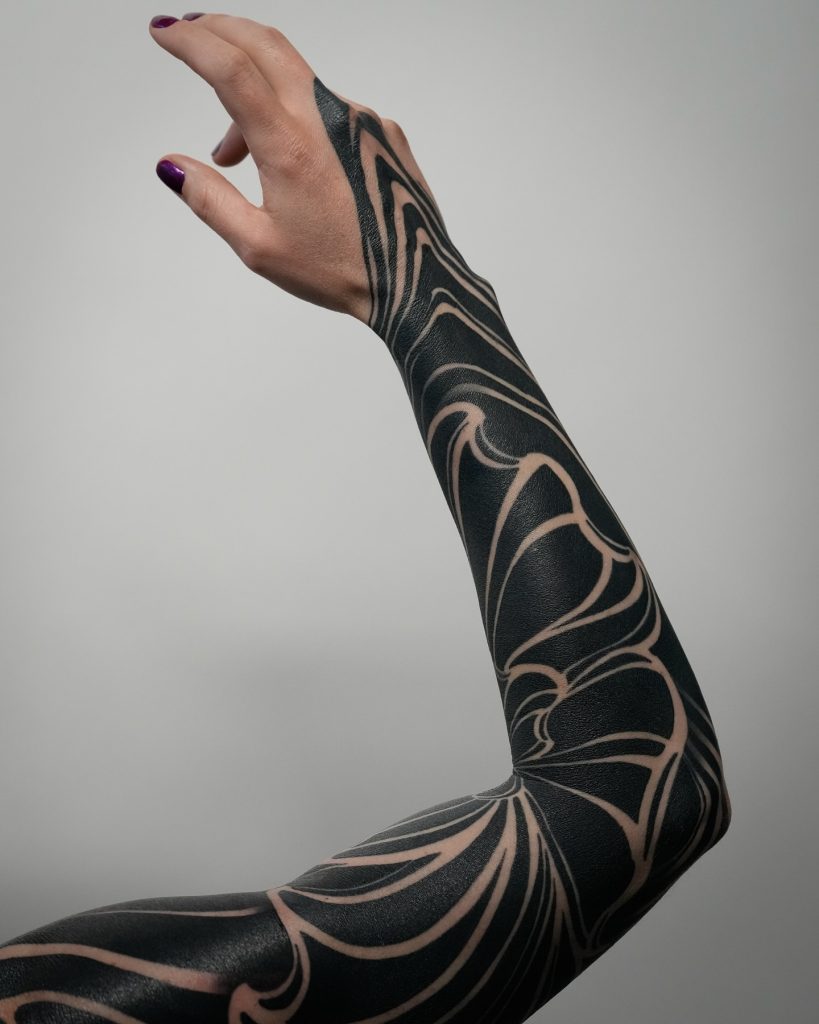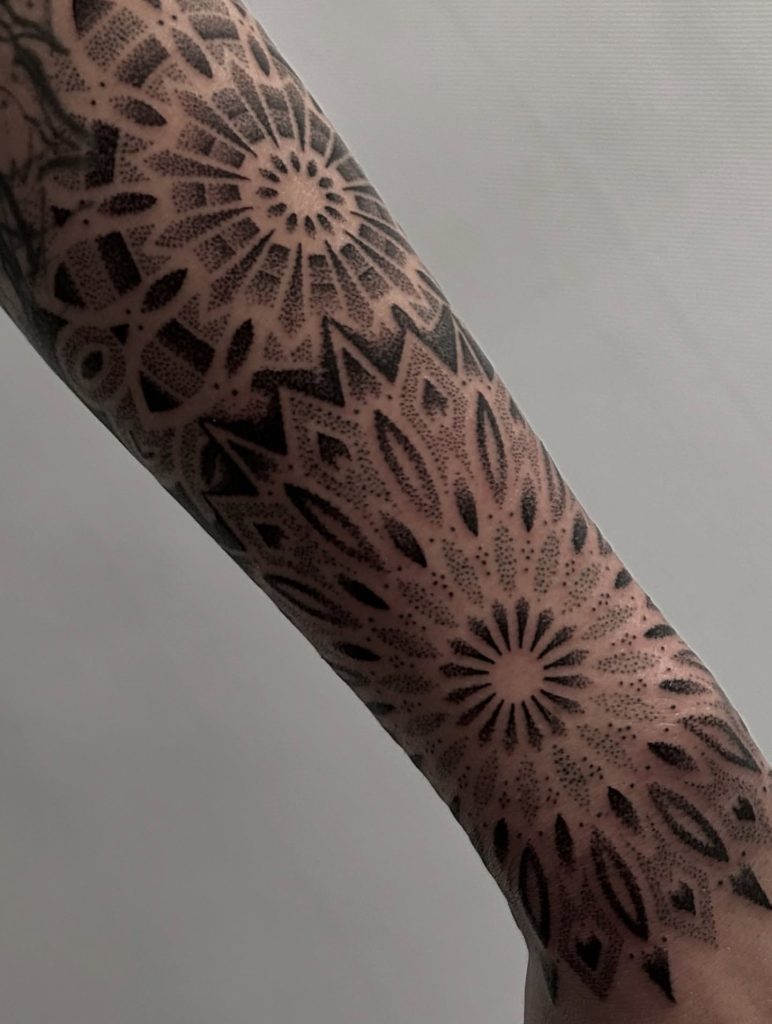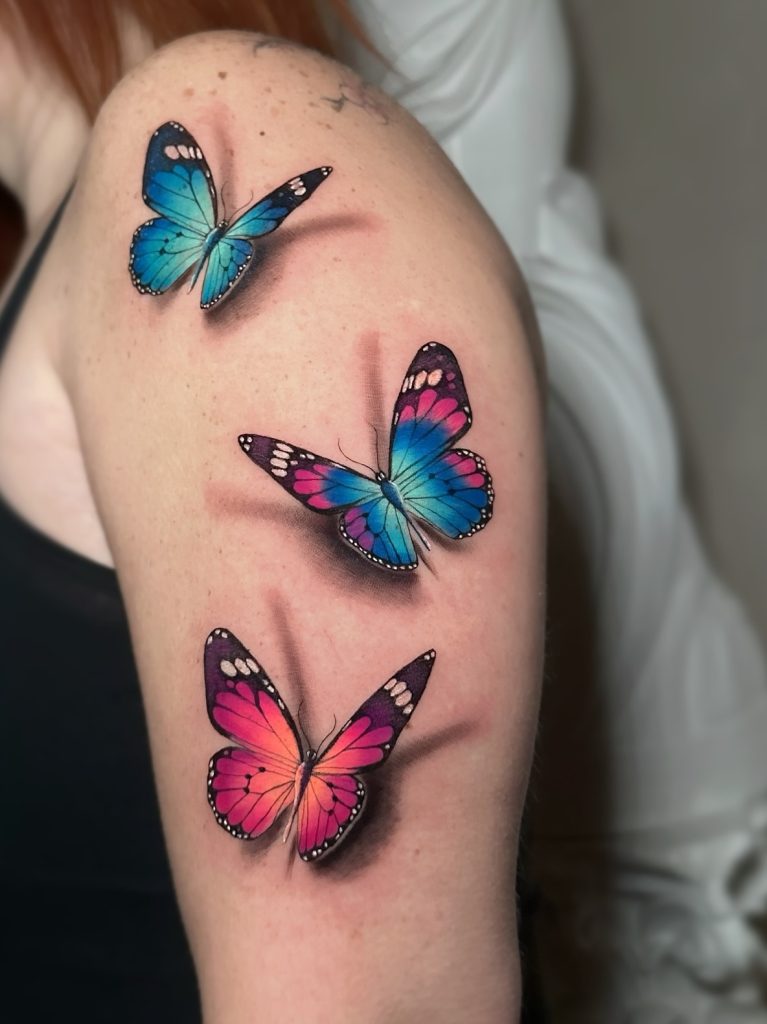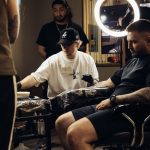Editor’s Note: At TattoosWizard, we’re dedicated to providing the best resources for artists and enthusiasts. This guide is a sponsored collaboration with the ink specialists at Murostar, whose focus on quality, consistency, and safety aligns with our values.
While a powerful design and a steady hand get most of the credit, the tattoo ink itself is the silent partner in every great piece of body art. The right ink determines the vibrancy, longevity, and healing of a tattoo, a topic we cover in detail in our Tattoo Aftercare Guide. Not all inks are created equal, and not every formula is suited for every style.
From the deepest blacks in geometric work to the subtle gradients in a realistic portrait, the ink you choose can elevate your art from good to unforgettable. This guide will walk you through how to select the best professional tattoo ink based on your artistic style.
01. For Bold Blackwork and Crisp Linework
Styles: Blackwork, Tribal, Geometric, Mandalas, Minimalist Linework
For styles defined by sharp contrast and enduring boldness, the quality of your black ink is non-negotiable. You need an ink with a high pigment density to create a deep, true black that stays saturated for years. Look for a formula with a smooth, consistent flow, which allows for solid, single-pass lines and even filling of large areas. A superior black ink will heal as a rich black, avoiding the dreaded fade to a bluish or greenish hue that can happen with lower-quality options.

02. For Ethereal Watercolor and Soft Gradients
Styles: Watercolor, Abstract, Painterly Effects
Watercolor tattoos mimic the fluid and often transparent nature of brushwork, and they require a specialized ink to achieve this effect. The key is finding an ink with a highly flowable consistency and controlled transparency. Unlike the opaque inks used for traditional work, these should be less dense, allowing for beautiful layering and soft gradients without the colors becoming muddy. The ability for colors to blend smoothly is paramount to creating those signature bleeding edges and fade-out effects.

03. For Precise Dotwork and Intricate Stippling
Styles: Dotwork, Stippling, Sacred Geometry, Ornamental Designs
In dotwork and stippling, visual rhythm and clarity are everything. These techniques rely on thousands of tiny impressions, so the ink must have a highly stable and even flow. An inconsistent ink can lead to patchy or uneven dots once healed, ruining the delicate texture of the piece. Whether you’re layering dots to create depth or executing a complex geometric pattern, choosing an ink that behaves predictably will ensure a clean and cohesive result.

04. For Hyperrealism and Smooth Portraits
Styles: Black & Grey Realism, Color Portraits, 3D Designs
Realistic styles are built on subtle tone shifts and gradual buildups of value. The ideal ink for this work must be formulated for layering, blending seamlessly without bleeding into adjacent areas. For black and grey artists, pre-mixed greywash sets are a game-changer, offering perfect tonal consistency straight from the bottle. These inks are designed to heal softly, creating the smooth shadows and lifelike textures that are hallmarks of realism.

Beyond Style: A Note on Ink Safety and Composition
Regardless of the style, the safety and quality of the ink should always be the top priority. Always ensure your chosen ink is:
- Professionally Certified: The ink should be sterile, properly sealed, and compliant with local health regulations, such as REACH in the EU.
- Made with Quality Ingredients: Look for inks that are free of heavy metals and other known allergens to ensure a safe application and healing process.
This commitment to safety is why professional studios across Europe trust suppliers like Tattoo Ink, who offer curated collections of inks known for their quality, consistency, and compliance with the strictest safety standards.
Final Thoughts
Tattooing is a blend of artistry and chemistry. Selecting the right ink is as crucial as the design itself, ensuring not only a beautiful result but also better healing and color that lasts a lifetime. Now that you know about the ink, the next step is to explore our guide on How to Find the Right Tattoo Artist for your chosen style.



No Comment! Be the first one.